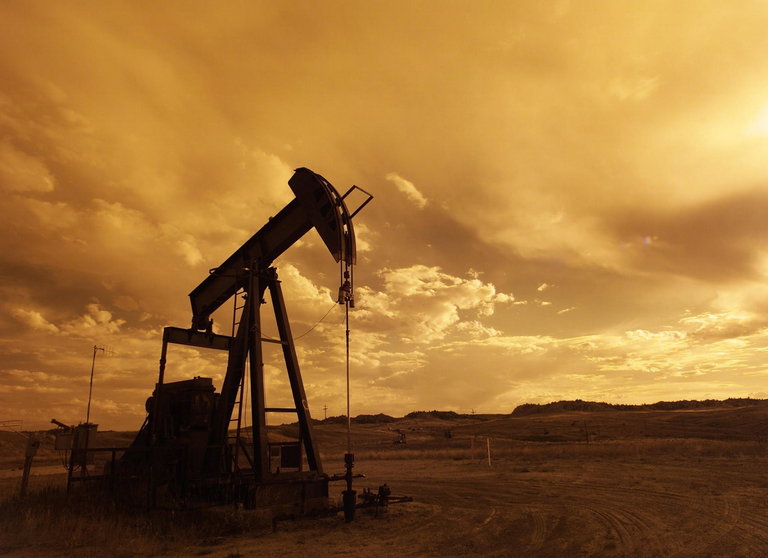
So a couple of years ago i wrote a paper on oil and gas, and i thought i would release it here. Most of it has been translated using google translate, so if there is any mistakes please let me know :-) Hope you find it informing and usefull.
Introduction
Oil and natural gas are two very valuable resources all over the world. The task will explain the formation of the two hydrocarbons and then be put in perspective to the countries of Ghana and Nigeria. The task investigates the location of the olives and the geological conditions in the subsoil. Later, it will be investigated what experiences Nigeria has had with their oil using Chapter 3 from '' A Raw World '' by Peter Maas. The economic situation in the country now compared to other countries, both African and European will be investigated, as well as the achievement of economic goals. The task will then discuss whether Ghana can get the oil money to the population, based on the material from the African Center for Energy Policy (ACEP), and from Shell's website, and what it takes to do that.
Formation of oil and natural gas
The formation of oil and natural gas, also known as hydrocarbons, is a long-term process, starting with organic matter (most plankton), sinking to the bottom and forming a layer on the seabed called the source-rock species, the organic material is often mixed with clay particles and it is called organic sludge. It is important that it is in a marine environment because there are anaerobic conditions, so the organic material does not rot. On top of the layer with the organic material, more layers are deposited, and the layers on the source beam must be over 2 km thick before the temperature (60 degrees) and the pressure becomes high enough for oil to form. For gas to be generated, it requires a temperature of 75 degrees, but the formation of gas is greatest at 120-160 degrees. Due. of the density of the hydrocarbons, they will migrate upwards until they hit a sailing mountain species such as a slate. The sealing rock species are very fine-grained and have a very low porosity and therefore have a very low permeability, which means that the hydrocarbons can not penetrate the layer. If the predominant mountain species lies obliquely, for example, a salt thirst, the oil will also move upwards, and it will cause the oil to accumulate more vertically, and this makes the recovery easier called an oil trap. The hydrocarbons are located in the mountain range just below the sealing mountain range, called the reservoir mountain range. The reservoir rock is ideally a very porous mountain species, as it will make the extraction of the oil easier. If you can also find gas in the oil trap, it will be over the oil as it has a lower density.
The hydrocarbons in Nigeria and Ghana
Carbons in Ghana
The formation and expansion of hydrocarbons oil and natural gas, as mentioned, depends much on the geological conditions in the subsoil where they are formed. In Ghana, the majority of oil drilling is off-shore. The largest oil field in the Ghana Jubilee field which lies off the western part of Ghana's coast. Ghana produces 26,4 MBBL annually, see Annex 2, see the World Bank expecting a production of 36 MBb in 2018, of which the Jubilee field produces 24 MBb a year. The World Bank estimates that the production of oil will increase until 2022, after which production will remain stable and the Jubilee field will produce 37.4 MBb of total Ghanaian oil production of 114 MBb. The World Bank expects production of 114 MBb a year to remain the same until 2031, where output will fall again. In Appendix 1, it can be seen that sandstone and slate can be found in the suburbs in Ghana's Gulf of Guinea. Sandstone is a reservoir of mountain species and slate is a sealing mountain species, which means that there are 2 basic elements present for the formation of oil and natural gas. Sandstone, as mentioned, is a very porous mountain species, which means that you can achieve a high output of up to 50%.
The hydrocarbons in Nigeria and Ghana
Carbons in Ghana
Oil and natural gas in Nigeria
In Nigeria, the elephants in Niger are delta, which is the delta of the Niger River running through Nigeria. The oil traps are in depth 2-4 km. Shell is the largest producer of oil in Nigeria. Shell accounts for 39% of total oil production in Nigeria, equivalent to about 1 million barrels of oil a day. Their area of oil extraction is 31,000,000 square kilometers of Nigeria's total land area of 923,768 square kilometers, equivalent to 3.35% of Nigeria's total land area (calculation: (31,000 / 923,768) * 100 = 3.35). In that area, Shell has over 1000 oil wells and 9 refineries. There is also a large natural gas extraction, and it produces about 150 million cubic feet of gas a day of Shell ale-ne. Looking at Appendix 2, you can see a survey of all oil wells, most of which are owned by Shell. Oil production is principally offshore, as seen in Annex 2, because it is in the river, but it is very shallow, which significantly reduces the cost of oil production, compared to offshore extractions in eg Ghana, where the drilling platforms are far from the coast. Looking at Appendix 3, you can see that the oil in the Niger Delta collects in the oil fields and you can see their migration paths, which are the ways the hydrocarbons take when they move towards the surface. Although you can not see what kind of mountain species it is, you can assume that there is a slate that is the sealing mountain species, as is also the case in Ghana, as you can seen below
Apendix 1

Apendix 2

Apendix 3
